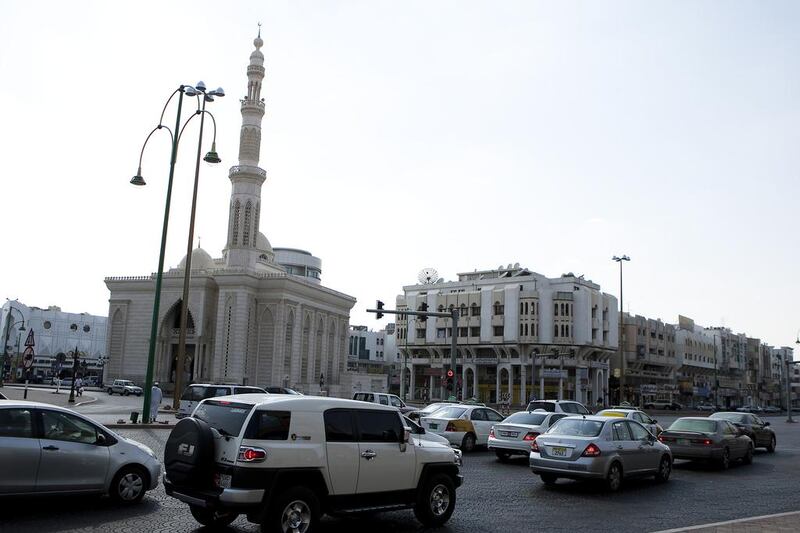ABU DHABI // Al Ain Municipality’s road safety specialist admitted on Tuesday that he was shocked to discover that only 10 per cent of those involved in traffic accidents in the Eastern Region were wearing a seat belt.
Figures released by Abu Dhabi police revealed that 81 people died on the roads of Al Ain last year.
And David George said: “The UAE has a very low seat-belt wearing rate and, quite frankly, I was shocked that while going over the casualties data in the Eastern Region that only 10 per cent were wearing seat belts.”
“But you need to remember that we had an extremely tragic collision on the truck road near Al Rawda Palace in February last year where more than 20 people lost their lives.”
The crash, where 21 workers were killed after a lorry ploughed into the back of their bus, was the UAE’s deadliest road accident.
“Excluding that one collision, it would have been the least number of fatal collisions in the Eastern Region since 2008,” Mr George said.
As well as wearing seat belts, Mr George said that casualty rates in Al Ain could be cut by installing cameras at traffic lights, more speed cameras, warning signs and rumble strips, also known as sleeper lines. These alert inattentive drivers to potential danger by causing vibration and audible rumbling.
Speeding, disregarding road conditions and not giving priority to pedestrians were the main causes of crashes in Al Ain. Changing lanes suddenly and tailgating caused half of the crashes.
“The number of red-light collisions we have in total in Al Ain and the whole Eastern Region make up only 4 per cent,” said Mr George.
“The city of Al Ain is known as the city of roundabouts and it does not have many traffic signals. Therefore, if you look at how many traffic lights there are in the Eastern Region, running a red light is a significant problem.”
In 2010 and 2011, Al Ain’s road safety unit identified more than 2,100 potential dangers on the roads. Of those, 1,000 were resolved in 2012, and 400 the following year.
“This year, we are hoping to resolve 200,” he said. “We are looking at a more detailed design and an improvement of pedestrian safety and movement at nearly 50 sites.”
The municipality’s forthcoming major road safety projects include 90 crossings, 90 improvements of alleyways or narrow streets, and three pedestrian bridges.
Last year “was our first year with a full road safety scheme programme”, Mr George said.
“We received three years of crash data from Abu Dhabi police, looked for crash cluster sites in Al Ain and selected 10 sites for a detailed investigation.”
These are Al Maqam traffic lights, the Tawam Street roundabout at the end of Schools Road, the lights in Sanayia, Al Baladiya Street lights, Hamdan bin Mohammed Street, the Waterfall Roundabout, Shakhboot bin Sultan lights 1 and 2 and the Bawadi Mall lights 1 and 2.
At Al Maqam lights, the first same-level junction on E22 from Abu Dhabi, there were six crashes that caused injury in three years, mostly rear-end collisions.
There were five injury crashes at the Tawam Street roundabout at Schools Road in a three-year period. Three were because the driver was not paying attention, while the rest were due to speeding.
“Drivers coming from north to south are not used to giving way and do not expect anybody to be coming around that side so they approach at a high speed, enter the roundabout too fast, hit the centre island and lose control of their vehicle,” Mr George said.
There were six injury crashes at the lights of the Sanayia district in three years. Four involved red-light running and two were because of changing lane suddenly.
At the Al Baladiya Street traffic lights, two accidents were because of jumping a red light, one rear-ended a vehicle and one lost control of the vehicle.
Hamdan bin Mohammed Street had six injury crashes – one of which was fatal – in three years, due to loss of control and excessive speed.
“Workers get dropped At Bawadi Mall signals 1 and 2, and picked up. They are bus stops on the western side, so they have to cross this fast and dangerous street,” Mr George said.
There were four injury crashes at each location. “Excessive speed is a common factor at many of these crash sites and seat-belt use is so low,” he said. “We all need to work together in increasing the use of wearing a belt.”
rruiz@thenational.ae






